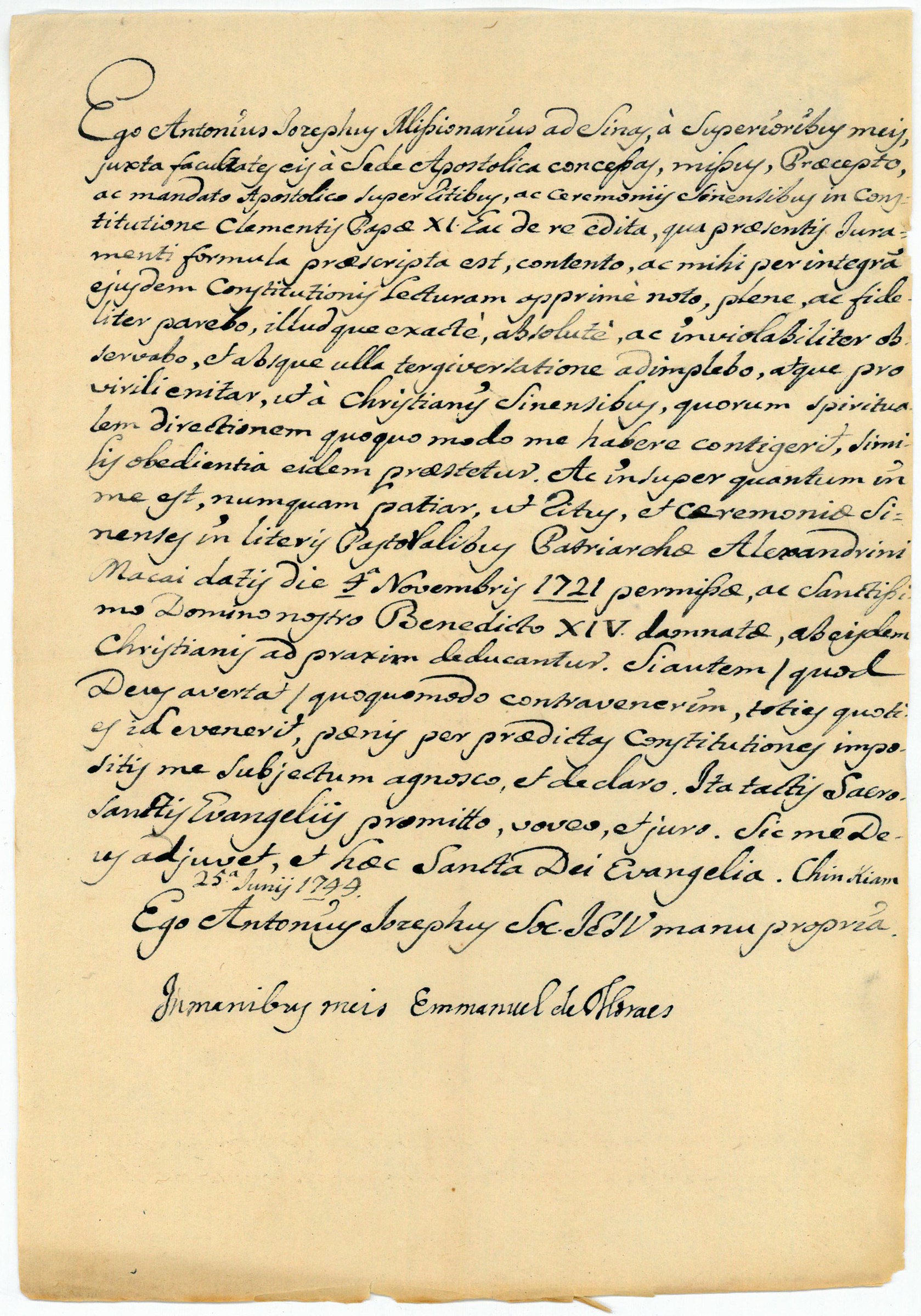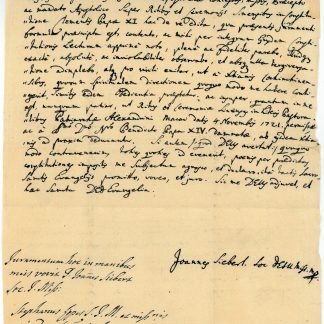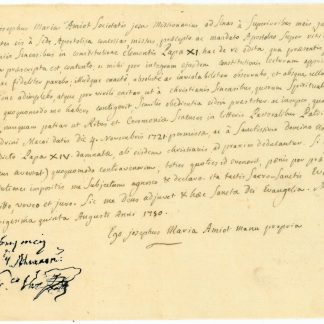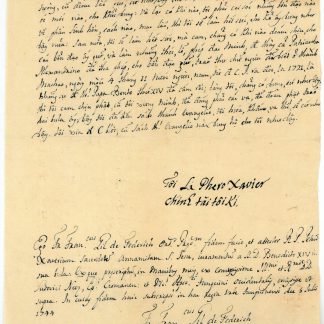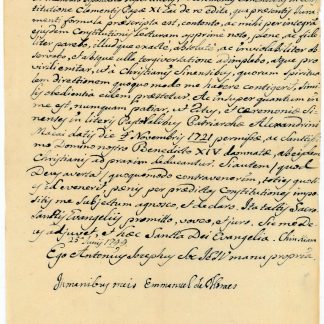The first Jesuit martyr in China takes an oath renouncing the practice of the Chinese rites
Autograph document signed. Co-signed by the Chinese Jesuit Manuel de Moraes.
8vo. 1 p. In Latin.
€ 8,500.00
An oath renouncing the practice of the Chinese rites, taken by the prominent Portuguese Jesuit as required by the Papal Bull "Ex Quo Singulari" (1742). The oath was sworn on the Bible, and a form signed in one's own hand ("manu propria") had to be produced as evidence. Depending on the availability, most of these documents are co-signed by church officials, senior friars, or equals as witnesses to an oath sworn in their presence ("in manibus meis"), in this case the Macau-born Chinese Jesuit Manuel de Moraes (1711-54).
António José Henriques is best known today as the first Jesuit martyr in China along with Tristano Francesco d'Attimis. In his previous vocation as a diplomat, Henriques accompanied the Portuguese ambassador Alexandre Metelo de Sousa e Meneses on his 1726/27 mission to China that was received by the Yongzheng Emperor in Beijing. Henriques chose to stay in China as a missionary and entered the Jesuit novitiate in Macau in 1727. After studies at the Jesuit college in Manila, Henriques returned to Macau in 1736 and was subsequently sent to join the mission in Nanjing. In 1744 the bishop of Beijing, Polycarpo da Sousa, entrusted Henriques with the succession of Roman Hinderer as Vicar General for the Jiangnan province (today's Jiangsu, Anhui, and Zhenjiang provinces), where he worked alongside Moraes and D'Attimis. In 1747, new orders from Beijing reached the province, starting an even more severe wave of persecution. The hiding places of Henriques and D'Attimis were eventually revealed by converts under duress, and they were arrested in December 1747. Imprisoned in Sozhou, they first received a mild sentence but the trial was repeated on orders of the governor of Nanjing, who was hoping for personal gain from severe punishment of the missionaries. In a long and brutal trial, both men were condemned to death and, after the Emperor's confirmation, executed by strangulation on 12 September 1748.
During the early years of their mission to East Asia, the Jesuits led by Matteo Ricci accommodated Catholicism to Chinese customs and Confucian practice in important ways, both for political reasons and in the hope of attracting more converts. Criticism of this syncretism is as old as the Chinese rites themselves, and Ricci's immediate successor Niccolò Longobardo attempted to change course, which led to his replacement as provincial. When Dominican and Franciscan missionaries entered China, they reported to Rome critically on the Jesuit practices. A first condemnation was decreed by Pope Clement XI in 1704 and confirmed in the 1715 Bull "Ex Illa Die". In reaction to the condemnation, the Kiangxi Emperor, who initially tolerated the Christian missionaries and had especially good relations with the Jesuits, officially forbade Christian missions in China. In 1721, Carlo Ambrosio Mezzabarba, the Latin Patriarch of Alexandria, was sent to Macau and Beijing as a Papal legate. Despite the concession of "eight permissions" regarding the practice of the Chinese rites, officiated in a pastoral letter to the missionaries from 4 November 1721, the Emperor did not revoke the ban. Finally, in "Ex Quo Singulari", Pope Benedict XIV re-affirmed the 1715 Bull and required all missionaries in the region to take the oath renouncing the practice of Chinese rites.
A transcription and translation of the document are available on request.
Minimal tears and browning.
Louis Pfister, Notices biographiques et bibliographiques sur les jésuites de l'ancienne mission de Chine, 1552-1773, Chang-hai, 1932-1934 (Nendeln: Kraus Reprint, 1971), no. 290, pp. 628-630 (Baborier) and no. 331, p. 731 (Moraes).

